In Depth Look @ Side 4
1. Revolution 1
Primary Songwriter: Lennon
It doesn’t matter if it’s your first time: you turn to side four expecting novelty, but you’ve heard this all before. Listening in 2001, it’s the same tune you heard covered at a 9/11 benefit. In 1987, you recognized the distorted guitars from a Nike ad; two years earlier it was a Ford commercial. Even if you got there as early as anyone, on November 22, 1968, Revolution 1 was hardly revolutionary. The real surprise came three months earlier when, on August 28, the Beatles released their Hey Jude single, carrying on its b-side both a musical and lyrical jolt to an unsuspecting audience.
It doesn’t matter if it’s your first time: you turn to side four expecting novelty, but you’ve heard this all before. Listening in 2001, it’s the same tune you heard covered at a 9/11 benefit. In 1987, you recognized the distorted guitars from a Nike ad; two years earlier it was a Ford commercial. Even if you got there as early as anyone, on November 22, 1968, Revolution 1 was hardly revolutionary. The real surprise came three months earlier when, on August 28, the Beatles released their Hey Jude single, carrying on its b-side both a musical and lyrical jolt to an unsuspecting audience.
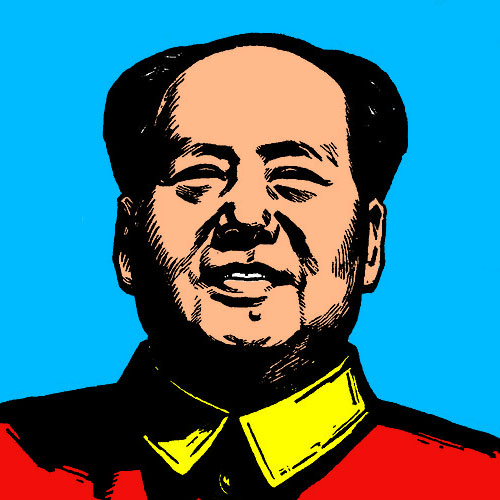
This version, recorded six weeks after the album take, is how Revolution entered the world. Lennon had wanted to release the original recording but was overruled by his mates who all thought it too slow. All parties compromised a bit, and a faster, rougher version was recorded and released, though never as a single. This likely had more than a little to do with McCartney’s other objection to the song: its political content which he deemed a poor fit for the ’s style. Revolution 1 is the most overtly political song the ever released, and it’s this distinction that, its many musical merits aside, earns the song so prominent a place in the Beatles canon.
Why Lennon wrote Revolution in 1968 is no mystery. For such a socially engaged artist to have made it through that tumultuous year without commenting on events through his work would have been the real surprise. “You say you want a revolution / Well you know / We all want to change the world”: These lyrics are now familiar to the point of cliché, but when they first flew off the aft side of a 7-inch, they were hardly platitudes. Thanks to the success of three straight masterpieces (Rubber Soul, Revolver, and Sgt. Pepper’s Lonely Hearts Club ), the Beatles had largely shed the image cultivated in their early career and revealed a more mature, yet undeniably playful, psychedelic flower power ethos. Revolution played brilliantly against type.
You say you’ll change the constitution, well you know, we all want to change your head. You tell me it’s the institution, well you know, you better free your mind instead…
~ John Lennon
In a sense, Lennon’s lyrics are small-c conservative. They express skepticism about the wisdom and efficacy of rapid social change and lament the futility of mere finger-pointing. The slower pace of Revolution 1 emphasizes this mournful undercurrent, while the b-side’s unrestrained roar provides an ironically triumphalist counterpoint. But this certainly isn’t a right-wing song, no matter how aggressively the forces of reaction try to lay claim to it (National Review once laughably named it one of the 50 Greatest Conservative Rock Songs).
“But if you go carrying pictures of Chairman Mao / You ain’t gonna make it with anyone anyhow.” These are the lines conservatives most emphasize in their attempts at appropriation, but it doesn’t take a staunch anticommunist to be troubled by the Great Leap Forward, and besides, these lyrics are primarily an appeal to pragmatism. You don’t win converts by praising tyrants. So, Lennon’s words weren’t a broad assault against the counterculture movement nor were they a blanket dismissal of anti-war protestors. This was, after all, the man who’d go on to write Imagine and Give Peace a Chance. What Revolution represents isn’t partisan vitriol or mindless self-denunciation, but the thoughtful, measured sentiments of a politically engaged man who knew which side he was on, but wasn’t always comfortable with those standing next to him.
But agree or disagree with this interpretation, one fact remains uncontroversial: few listeners experience Revolution 1 outside the context of The Beatles. It’s the b-side that gets all the glory. It’s that version that you remember, that you hear in your mind at the mere mention of the song, that you recognize spilling out from the earbuds of a fellow subway passenger, and yes, it’s that version that sells you sneakers. Poor, overlooked Revolution 1 just has to settle for being one of the very best songs on one of the very best albums by the greatest of all time.
— Nav Purewal
2. Honey Pie
Primary Songwriter: McCartney
In the book Here, There and Everywhere: The 100 Best Beatles Songs, Honey Pie doesn’t rank, but is mentioned once. It’s described as somewhat ridiculous. Somewhat ridiculous? It is ridiculous: a dive-right-in tribute to the British hall, something akin to vaudeville in the US. Honey Pie is fluff, albeit fluff with a great melody and sharp musicianship, not unlike much of the Beatles’ discography. Of course, the joy of playing fluff wears off eventually, as it did with the Beatles, but in this moment, one preserved for eternity, they’re having a ball.
In the book Here, There and Everywhere: The 100 Best Beatles Songs, Honey Pie doesn’t rank, but is mentioned once. It’s described as somewhat ridiculous. Somewhat ridiculous? It is ridiculous: a dive-right-in tribute to the British hall, something akin to vaudeville in the US. Honey Pie is fluff, albeit fluff with a great melody and sharp musicianship, not unlike much of the Beatles’ discography. Of course, the joy of playing fluff wears off eventually, as it did with the Beatles, but in this moment, one preserved on record for eternity, it sounds like they’re having a ball.
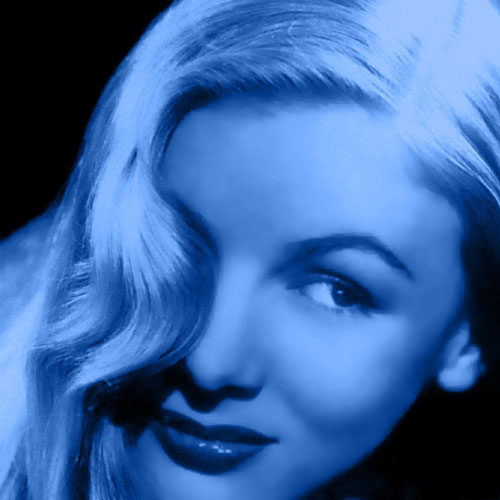
Clearly McCartney’s baby, the song is a tribute to show-tune of the past that keeps all of the goofy theatricality intact, right from the intro, which sets the scene firmly within the world of show business. And not showbiz today, but that fantasy world of yesteryear. “Now she’s hit the big time,” McCartney announces, his voice juxtaposed with the sound of a scratchy phonograph. When the main tune rolls in on a piano, you can practically see McCartney bounding across the stage with a and cane, that silly grin on his face. The silliest part is McCartney’s near-scat singing in one section: a growl that turns into a falsetto cry. “I like this kind of hot kind of ,” he sings, seemingly on the , unable as always to resist making a sentimental statement, even while hamming it up.
The song’s a costume—one of many the Beatles wear on The Beatles. And yes, the rest of the is in on the act too. Lennon’s contribution is most notable. He goes at the jazz angle with a Django Reinhardt-like guitar solo, a nimble one that almost slips into the background at first, but becomes the song’s secret star once you catch on. It’s the scene-stealer at the back of the stage, the one the audience really remembers, later on, that night. Or maybe that guitar solo just adds to the atmosphere, which is romantic but not. “I’m in love but I’m lazy,” runs the basic sentiment, and the song itself doesn’t seem to care much about love, at least compared to the joy of grinning under the spotlight, or listening to someone else ham it up through a fuzzy radio.
It’s probably the kitsch factor that has made Honey Pie a cover of choice for easy listening/vocal jazz types, like Barbara Streisand, even. The song’s goofy shuffle isn’t about rock ‘n’ , though the song does foreshadow the multitude of rock bands in years to come willing to throw in non-rock horns or get theatrical. Honey Pie dares to be goofier than any of those bands are likely brave enough to be. It holds little back for entertainment, like those hall performers giving it all for the applause of the crowd. And though “Honey Pie” is often cast aside as one of the album’s low points, so much of The Beatles is silly, goofy, corny. The Beatles are a corny , after all, and not just McCartney. Did you see Help? Yellow Submarine? A Hard Day’s Night?
The putting on a show quality of Honey Pie, and the entire White Album, comes from that same place. The Beatles told dumb jokes and wore costumes, not just in their early years but most of the way through. Don’t forget about that. Don’t mistake their “ridiculous” side for weakness or a lack of substance, either. Every tough-faced, hard-living rock is putting on just as much of an act, even the Stones. But if the White Album is itself a variety show, and it is, then Honey Pie could just be the heart and soul of the album. It’s at least as representative, maybe more so, of the double album’s essence as any of the more serious or classic songs. Honey Pie is a lark, but so is the album. It’s Beatles on Vacation.
—Dave Heaton
3. Savoy Truffle
Primary Songwriter:Harrison
Harrison’s fourth and last contribution to The Beatles, Savoy Truffle is probably the closest he ever came to a stupid song, or a song about a stupid, absurd topic in the same vein that his peers had long been doing, especially Lennon. Using a similar technique as Lennon did when penning the lyrics to Being for the Benefit of Mr. Kite! (that is, copying names from a circus line-up of acts), Harrison effectively decided to write about his dear friend Eric Clapton’s addiction to chocolate. The two had become close friends by this time.
In the book Here, There and Everywhere: The 100 Best Beatles Songs, Honey Pie doesn’t rank, but is mentioned once. It’s described as somewhat ridiculous. Somewhat ridiculous? It is ridiculous: a dive-right-in tribute to the British hall, something akin to vaudeville in the US. Honey Pie is fluff, albeit fluff with a great melody and sharp musicianship—not unlike much of the Beatles’ discography. Of course, the joy of playing fluff wears off eventually, as it did with the Beatles, but in this moment, one preserved on record for eternity, it sounds like they’re having a ball.
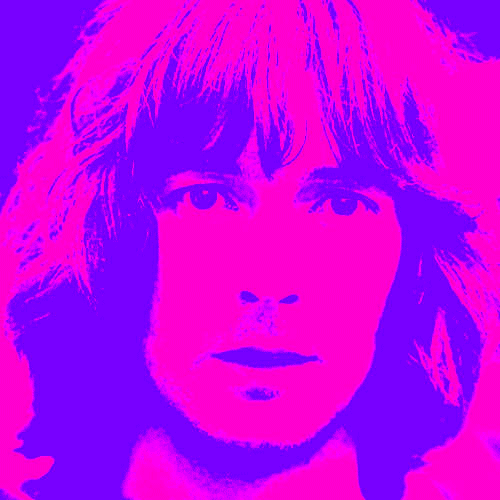
And in to do so, he copied the ingredients information from a box of Mackintosh Good News chocolates. Apparently, the chorus “But you’ll have to have them all pulled after the savoy truffle” is a direct reference to the deterioration of the because of eating so much chocolate. From this idea, I extract two direct consequences:
- Amongst other things, Clapton should be eternally grateful to Harrison for not having to expend thousands on dentistry bills.
- Monty surely got their inspiration for Mr. Creosote’s sketch in The Meaning of Life from this song. It has to be so, given the friendship between Harrison and the sextet of comedians (Is it necessary to remember that Harrison produced Life of Brian?) and taking into account that the last thing Mr. Creosote eats before vomiting and exploding is, yes, a tablet of chocolate.
Musically, it’s interesting to notice that Savoy Truffle is the last rock song on The Beatles. After it, there’s only time for the melancholy of Cry Baby Cry, the artsiness of Revolution 9, and the tenderness of Good Night.
And although Lennon did not participate in the recording, Harrison’s song sounds like a effort, with McCartney’s and Starr’s drums resounding in full force. The sound the trio achieved on that occasion seems to make sense as a direct precedent to Harrison’s solo material: Savoy Truffle is closer to any of the rock numbers in the Phil Spector-produced All Things Must Pass than to anything Harrison ever did with the Beatles. Savoy Truffle is more Wah Wah than Taxman, much more What Is Life than I Want to Tell You. No wonder that Harrison stuck with Starr on drums for his solo albums, ‘cos part of the vibe in his last songs within the Beatles clearly comes from the genius of the underrated drummer. In Savoy Truffle, Starr gives a master class of his , with the help of a bit of delay in the snare microphone (this is something that’s pretty obvious at the start of the song and in the middle break).
Indeed this song has a groove like no other on The Beatles, a cadence closer to bossa nova, jazz-funk, and/or acid jazz, thanks to the importance and adherence of the syncopated melody line that the saxophone sextet draws. This is even more palpable in the cover version that Ella Fitzgerald recorded just a year later, in 1969. But the rhythm pattern sustained by saxophones, , and drums is so integral to the song, that it persists not only in that one but in absolutely all the cover versions of Savoy Truffle that I have listened to, including the most improbable of them all, one by They Might Be Giants. It’s funny, though, taking into account that Harrison decided to distort the sound of the saxophones, to great displeasure of the original players.
It’s not just the saxes, but the falsettos, too, the way some of the guitars double the vocal melody, and the -like guitars—with that one that howls at a very high pitch rate during the second chorus acting as a farewell to rock—always made me think that this was one of the songs with the most modern vibe in all the Beatles’ repertoire, second only to Tomorrow Never Knows. And now that I revisit it again and listen to it more closely, it strikes me as having some kind of Franz Ferdinand-ish quality, to look for some modern reference. Would they ever dare to cover it?
—Pablo Amor
4. Cry Baby Cry
Primary Songwriter: Lennon
Cry Baby Cry is the kind of song Beatles fans love to pick apart. Its cryptic singsong lyrics reflect an absence, like the blank canvas adorning The Beatles’ album cover. The characters and actions of its verses beg to be deconstructed but defy certainty of explication. It is pluralistic and discursive, a cryptographic cipher and addlepated collection of gibberish all at once. Lennon himself, in one his final interviews, called the song “rubbish” and disowned it to McCartney. Yet, it remains on many fans’ favorites lists.
Cry Baby Cry is the kind of song Beatles fans love to pick apart. Its cryptic singsong lyrics reflect an absence, like the blank canvas adorning The Beatles’ album cover. The characters and actions of its verses beg to be deconstructed but defy certainty of explication. It is pluralistic and discursive, a cryptographic cipher and addlepated collection of gibberish all at once. Lennon himself, in one his final interviews, called the song “rubbish” and disowned it to McCartney. Yet, it remains on many fans’ favorites lists.
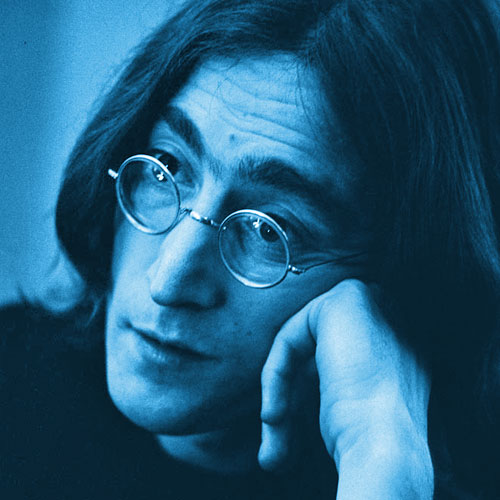
The song has been revered enough to garner a handful of reverent covers by artists as diverse as Ramsey Lewis, Throwing Muses, Phish, and Bardo . The verses, about the affairs of royalty (both perfunctory and extramarital), mime the old rhyme Sing a Song of Sixpence, but with an explicit role reversal. In Sing a Song of Sixpence, the extravagances of the lavish king and queen, counting their money and feasting, take their toll on the worker in garden (the maid), who has her nose pecked off by blackbirds that were baked into a royal pie. Lennon’s verse imagines a royal family with fealty to the younger generation, who can command the mother to sigh, make the queen play them parlor songs and paint them pictures, and haunt their elders with séances of repeating. With the ‘60s so focused on the incoming generation, the adult world was at their behest, awaiting each next step.
Lennon’s cry is a privilege of the young (who are known here as baby, a term of both puerility and endearment), but Lennon insists it be used tactically. The cry could be a mournful weep, a rejection of principles, a call for change, a spoilt whine, or a barter (Lennon took the line from an advertisement which implored children to “Cry baby cry / Make your mother buy”). In any of the above instances, it’s enough to make your mother sigh. Mother is old enough that she should see in her young a kind of reciprocity of demand. The expectations instilled in the baby boom generation, the first generation of Beatles fans who were given to enough leisure time to decode their indoctrination, gave them over to cries for freedom, peace, equality, and revolution. Yet, mother is resigned to sigh. She begrudgingly accepts the world at face value, unwilling to peel back the layers of the glass onion for fear of disrupting the status quo.
In a sense, Cry Baby Cry is clearly representative of the ironies and the dualities of The Beatles as a whole. The Beatles is a cross-genre smattering of cultural, historical, and theoretical bricolage. Cry Baby Cry is a standout on that album only in its clever infusion of unconscious psychodrama, which masquerades under the subdued bathos of inconsequentiality. Much has been made of the double album’s apparently arbitrary track placement, but it’s no small mistake that Cry Baby Cry was placed directly before the musique concrète pop-culture pastiche Revolution 9, perhaps the most radically abstract song ever produced by a mainstream pop group. The rhyme juvenilia lulls the listener into a false sense of security, the falseness perpetuated by the undergirding darkness of the seemingly innocent lyrics, which hint at bastard children, infidelity, and impotence.
The song ends with McCartney asking “Can you take me back where I came from? Can you take me home?” Having been shown childhood and the curdling tears of a weeping child in Cry Baby Cry, McCartney begs to be taken even further back, back to birth, back to where it all started. It’s fitting then that he should use a blues guitar, the very seed of rock ‘n’ , as a way of communicating this desire. He repeats the two lines, but upon repetition addresses his questioning to Brahma, god of creation (though some will dispute that he says Brother or Robert, as in the Beatles’ psychotropic pharmacologist Robert, one of The Beatles‘ many self-reflexive references). “Brahma, can you take me back?”
The listener is then taken perhaps further back than anyone could have anticipated, back to the primordial ooze of Revolution 9, an acid-soaked nightmare, preliterate, precognizant, and defiant of any solid perimeters or structure. America and Britain regressed back to Pangaea.
“At twelve o’clock a meeting ‘round the table for a séance in the dark / With voices out of nowhere put on specially by the children for a lark”, goes the last official verse of Cry Baby Cry. The “voices out of nowhere” foreshadow the random spectral spoken-word snippets that float through Revolution 9 like ghosts at a séance. But was it all a lark, the whole album, the whole Beatles catalog, the whole decade?
Years later, when the jaded Lennon would look back and say “nothing changed except that we all dressed up a bit, leaving the same bastards running everything” and singing “I don’t believe in Beatles”, he hinted at what he might have been insinuating with the whole lark that is The Beatles. It was a rejection of everything, not least of all the ultimate authority, that which had become an institution, a sacred idol even. The Beatles themselves. The White Album was the Beatles’ anti-bible, an episteme of future thought forged through the purging of the past.
—Timothy Gabriele
5. Revolution 9
Primary Songwriter: Lennon
Except for Charles Manson, every Beatles fan seems to despise this musique concrete track the most. But if they listen closely, they might understand that the song really is a revolution, just not necessarily the kind that they imagined or wanted to know about. The musical roots of Revolution 9 come not only from Ono’s Fluxus background but also theatrical compositions from avant composers like Berio and Kagel. McCartney and Harrison had been skewing song form but their experimentations were not being included on official Beatles albums.
Except for Charles Manson, every Beatles fan seems to despise this musique concrete track the most. But if they listen closely, they might understand that the song really is a revolution, just not necessarily the kind that they imagined or wanted to know about. The musical roots of Revolution 9 come not only from Ono’s Fluxus background but also theatrical compositions from avant composers like Berio and Kagel. McCartney and Harrison had been skewing song form (with the unreleased Carnival of Lights and the soundtrack Wonderwall , respectively), but their experimentations were not being included on official Beatles albums.
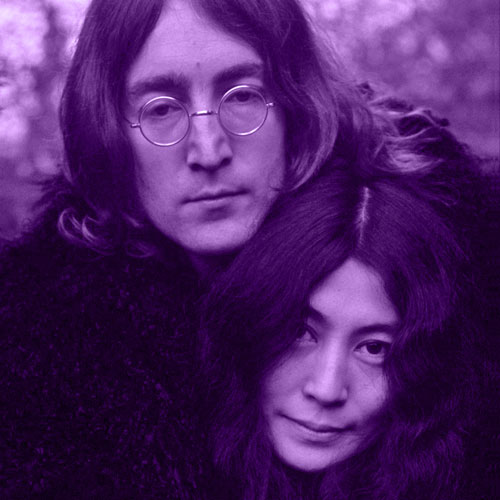
Even the had made a habit of screwing with the conventions of 4/4 time and verses and choruses on Tomorrow Never Knows, Happiness Is a Warm Gun, and I Am the (all Lennon tunes, too). Revolution 9 is an extension, or logical conclusion, of these outré urges from what was the world’s most popular .
Revolution 9 was an unconscious picture of what I actually think will happen when it happens; just like a drawing of a revolution.
~ John Lennon
If you think about the song conceptually, what was Lennon really saying? For all extents and purposes, it’s a political song, but not one that takes sides or preaches viewpoints. It’s more like the Stones’ Fighting Man, the Mothers of Invention’s Trouble Every Day, or Marvin Gaye’s What’s Goin’ On, describing problems and divisions, but in a more graphic way here. In some ways, Revolution 9 is akin to Dylan’s early electric phase where he rejected protest songs and crafted surreal songs of spiritual and existential crises.
But in a way, Revolution 9 is about something more personal for Lennon. (He was doing similar experiments along with Ono at the same time, which would soon turn up as their Two Virgins album.) McCartney and George Martin hated the song and begged Lennon to keep it off the album, but he refused. He didn’t care if it would alienate or confuse fans. Lennon wanted to make a statement by keeping it on a Beatles record. In a way, it’s saying what the rest of The Beatles is only telling its listeners obliquely—for all extents and purposes, the Beatles were finished.
A revolution is not a party, or an essay, or painting a picture, or doing embroidery. A revolution is an insurrection, an act of violence.
~ Mao Zedong
It wasn’t just that Revolution 9’s anarchic structure blew apart the ’s image or sound; it was also loaded with references to the Beatles themselves. Just as Glass Onion gleefully picked apart the group’s myth with all sorts of sly lyrical references, or I’m So Tired told of Lennon’s spiritual malaise, Revolution 9 contains torn bits of Revolution and A Day in the Life, and supposedly tapes of Beatles fans screaming for them (as well as the dead McCartney clues, if you want to believe those). In some ways, Lennon was recycling and digesting these Beatles snippets and salvaging them for the madness that they had become. You could argue that Lennon wasn’t just describing turmoil in the streets, but also in his own group. Just as he was ambivalent about the idea of insurrection on Revolution 1, he was also torn about the Beatles themselves. Within a year, he would quit the group, effectively spelling the end of the . His first proper solo album, 1970’s Plastic Ono , would be a purging of his persona and the group.
But other than this historical , Revolution 9 shouldn’t be seen only as an annoying, useless noise-fest. For one thing, there are some nice musical bits submerged there (the intro piano, lulling mellotron tones, the frantic strings) and plenty of humor too—when Alarm Will Sound recently covered it live for their 1969 series, these two points finally became clear; playing it alongside Stockhausen gave the piece the context it usually lacked alongside the other Beatles songs on the “White Album”. And the song definitely had fans outside of Manson’s Family: With Wound, Negativland, Ground Zero, and others all seemed to take Revolution 9’s m.o. as their blueprint, and maybe have the tune to thank for helping to open up the avant world to the rock/pop world. That might be the song’s real legacy, detractors be damned.
And not surprisingly, the song does sound even creepier backward, as you can hear here. It really does sound like some guy is saying, Turn me on dead man.
—Jason Gross
6. Good Night
Primary Songwriter: Lennon
Beatles fans have always considered Lennon the smart Beatle, the intellectual whose cleverness offset the pop sensibilities of McCartney, the spirituality of Harrison, and the goofiness of Starr. Listeners believed Lennon was the witty Beatle, the one who made the bright and brainy. This may be true, but John was more than that. He was also the sappy Beatle, the one who most wore his emotions on his sleeve. Nowhere is this more evident than on The Beatles‘ closing song. Lennon composed Good Night as a lullaby for his five-year-old son Julian.
Beatles fans have always considered Lennon the smart Beatle, the intellectual whose cleverness offset the pop sensibilities of McCartney, the spirituality of Harrison, and the goofiness of Starr. Listeners believed Lennon was the witty Beatle, the one who made the bright and brainy. This may be true, but John was more than that. He was also the sappy Beatle, the one who most wore his emotions on his sleeve. Nowhere is this more evident than on The Beatles‘ closing song. Lennon composed Good Night as a lullaby for his five-year-old son Julian.
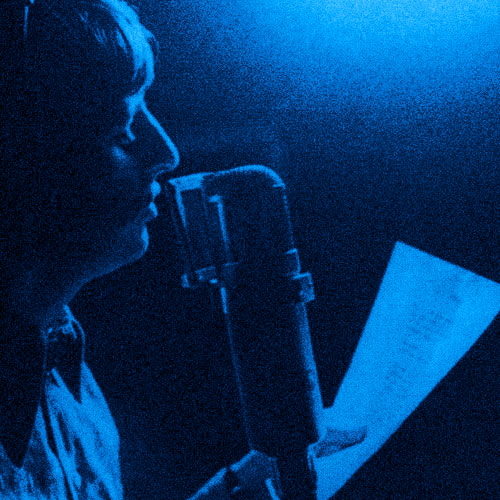
Lennon never recorded a version, although McCartney told an interviewer about the time when Lennon sang it to the in to teach it to Starr. McCartney said Lennon’s singing of the tune revealed the tender, loving, generous side of Lennon and is one of McCartney’s favorite memories of the deceased Beatle.
Starr sings Good Night on the record, and is the only Beatle who performs on the track. No other Beatle sings or plays a note. George Martin arranged an orchestra that consisted of 12 violins, three violas, three cellos, three flutes, one harp, one clarinet, one horn, one vibraphone, and one string . The Mike Sammes Singers provided back up vocals.
Lennon wanted the song to sound soft and lush. Good Night follows the wild weirdness of Revolution 9 and like all lullabies, it is meant to soothe the listener. This is evident from the first notes. The strings softly swirl and crescendo in welcome. Something celestial happens as if dreamland is a place right next to heaven, if not paradise itself.
The lyrics are simple and easy to understand. From the very beginning, the meaning is clear. “Now it’s time to say good night / Good night, sleep tight,” Starr croons in a hushed tone. He never raises his voice. Starr wants you to slumber and rest easy. The most commonly repeated phrase, in a song full of calming redundancies, is dream sweet dreams. The corniness of the sentiments border on self-parody, but Starr’s richly sung intonations make it clear that the song is meant to comfort. The interplay between Starr’s voice and the grand instrumental arrangements that surround him heighten the effect. If Starr’s voice is a yawn, then the orchestrations are a sigh. Sleep is the time when all people can be the gods of their perfect worlds.
This impression is reinforced by the softly whispered, spoken word ending, “Good night, good night everybody / Everybody, everywhere, good night”. Note that the record that began with a song called Back in the U.S.S.R. ends with a call to everybody, everywhere and acknowledges the ’s global audience. The Beatles know that millions of people across the earth are hungrily waiting to hear what the has to say. And the Beatles say now is the time to chill.
The Beatles released this album into a world of wars and civil unrest. In America, the nation had recently elected a conservative, Republican president, Richard Nixon, instead of a liberal Democrat for the first time during the ‘60s. There were revolutions of one sort or another happening here, there, and everywhere. Several other songs on the album reflect that the Beatles were aware of this unrest, but here they are asking their listeners to relax. “Close your eyes / And I’ll close mine,” Starr intones in a dulcet voice. Yes, this is Lennon offering words of comfort to his little boy, but when Starr sings it, he is talking to all of us. There will always be problems. We will always need to sleep. Tomorrow is another day, and as another closing song written by Lennon from a previous album says, tomorrow never knows.
—Steven Horowitz





